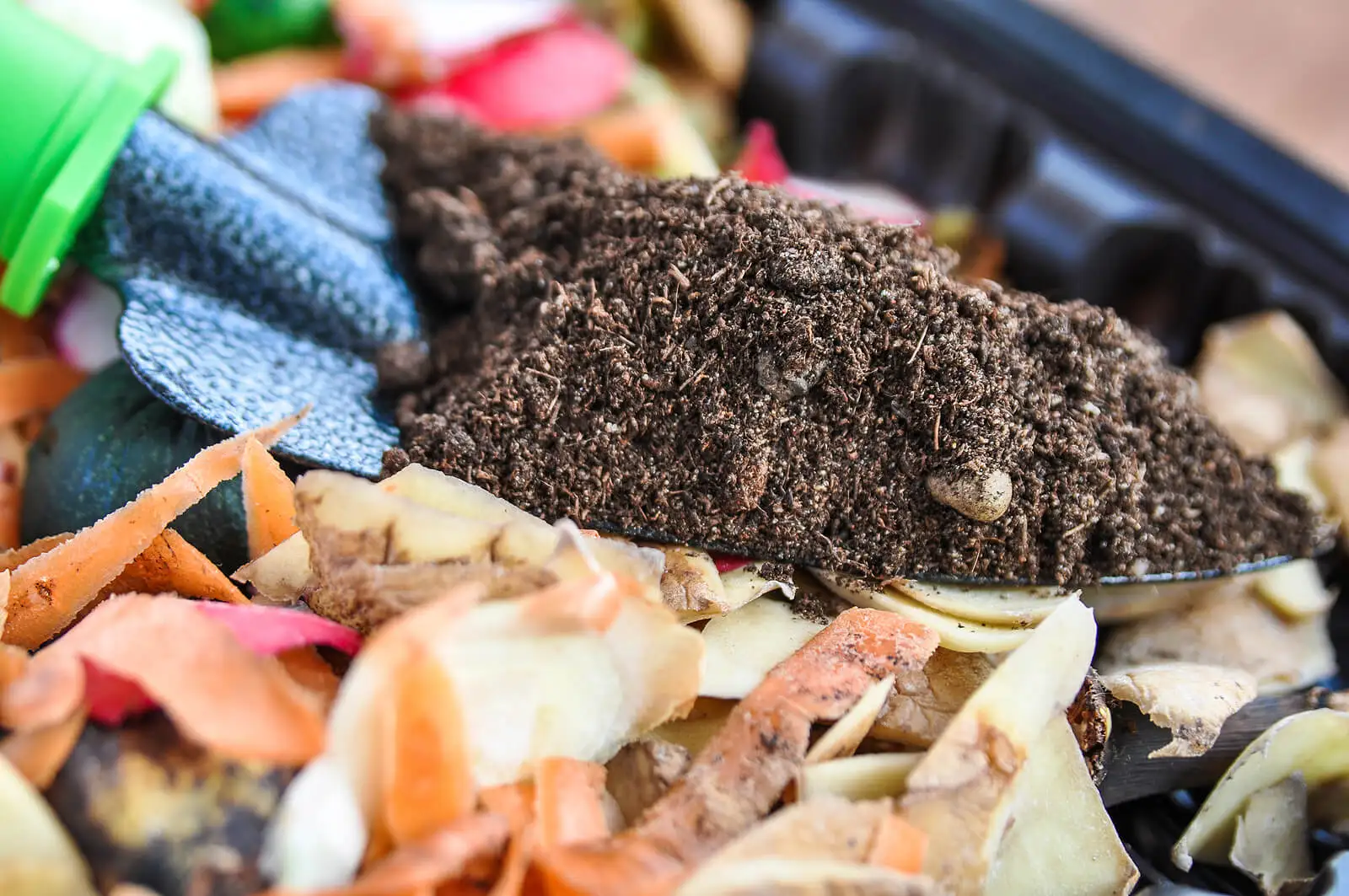Humic Substances: Characteristics and Benefits for Plants

Agricultural fields tend to have less and less organic matter to nourish and enhance the development of their crops. This is due to several factors, such as overexploitation of the land, the use of chemicals, or deforestation. Because of this, humic substances come into play, and have become essential for plant growth.
These are the main substrates that make up most organic matter. They originate from a series of chemical and biological phenomena in which small molecules from organic waste are mixed.
Discover the great benefits of humic substances for soil fertility and plant growth.
What are humic substances?
Humic acids are formed from a mixture of molecules in a process known as humification. Along with photosynthesis, this is one of the most important biological events in plant development. It occurs deep in soils, from organic remains of plants and vegetables accumulated for a long time.
They make up between 65% and 75% of organic matter, which gives them the capacity to transform the fertility of soils. They can be present in composts, peat and leonardite. It is from the latter that humus or humic substances with better quality for commercialization are usually extracted.

Humic substances characteristics
Humic substances are the result of a microbiological process with complex characteristics. In general, they can be:
- Fulvic acids
- Humic acids
- Hymatomelanic acids
- Humins
They have a black or brown color and the classification depends on the solubility of their components. With respect to plants, humic acids act in a slower but sustained way. Meanwhile, fulvic acids act faster, but with less persistence, and are more likely to be absorbed by leaves and roots.
Take a look at this article: Five Ways to Make Natural Compost for Your Plants
Benefits of humic substances for plants
Using humic substances to stimulate plant growth is effective and helps reduce the use of industrial fertilizers and pesticides. This is proven by several scientific studies, such as this one.
It determines that humic substances are a viable alternative to combat the consequences of climate change with natural and environmentally-friendly products. Humus plays a central role in both soil fertility and vegetation nutrition.
Absorption
One of the main benefits that humic substances have on plants is the improvement of nutrient absorption. This allows a more efficient development of vegetation and favors physiological processes.
Resistance
The most frequent problems that crops are exposed to are the proliferation of pests, diseases and climatic adversities. Humic substances increase the natural resistance of plants to these problems.
Roots
Root development is also favored if the quality of organic matter is improved. Humus stimulates respiration and strengthens vertical root growth.
Quality and appearance
Beyond enhancing overall growth, quality crops are also achieved. The color, taste and size of the products are improved. On the other hand, appearance and aesthetics are also enhanced.
Seeds
Humic substances improve and increase seed germination. The result is greater vegetative development and higher yields.

Benefits of humic substances for soils
Constant agricultural work, together with the use of industrial and inorganic fertilizers, among other reasons, are leaving soils with a low organic matter content. This generates a loss of productivity, so the use of humic substances appears as a solution with multiple benefits for soil quality:
- Roots: they improve and strengthen their growth.
- Erosion: they work against soil erosion.
- Toxic substances: they reduce their presence in soils.
- pH: they contribute to the regulation of the acidity level of the soil.
- Nutrients: they favor the assimilation of macro and micronutrients.
- Quality: they contribute to the quality of chemicals such as zinc, iron and copper.
- Microorganisms: they stimulate their presence and microbial activity in general.
- Absorption: they improve energy absorption and facilitate soil warming.
In sandy soils, humic substances contribute to a greater retention of nutrients and water, coating the sand particles. On the other hand, in clay soils, they increase aeration, making the substrate softer. This increases nutrient and water ingress.
Discover more in this article: Best 9 Small Trees to Plant in Pots and Their Care
Incorporating humic substances into crops
With all the benefits they represent for soils and plants, there is no doubt that incorporating these substances is an advantage for crops. Yields improve rapidly and soils, little by little, gain in quality.
If a more direct improvement in soil conditions is sought, then an application with a higher presence of humic acids is recommended. On the contrary, if you need them to act on the plant, the solution should prioritize fulvic acids.
Regarding market prices, there are cheaper options, generally with plant residues, as well as other more expensive ones. The latter are mine extractions, where the substances have remained in formation for hundreds of years and come from leonardite.
All cited sources were thoroughly reviewed by our team to ensure their quality, reliability, currency, and validity. The bibliography of this article was considered reliable and of academic or scientific accuracy.
- GONZALEZ, Marilú et al . Potencial uso de la leonardita para el cultivo de rosa en condiciones de invernadero. Agron. Costarricense, San Pedro de Montes de Oca , v. 42, n. 1, p. 155-162, June 2018. Available from: http://dx.doi.org/10.15517/rac.v42i1.32202
- Helen Veobides, Fernando Guridi Izquierdo, Vladimir Vázquez Padrón. Las sustancias húmicas como bioestimulantes de plantas bajo condiciones de estrés ambiental. Universidad Agraria de La Habana. November 2018. Disponible en: https://www.researchgate.net/publication/347590431_Las_sustancias_humicas_como_bioestimulantes_de_plantas_bajo_condiciones_de_estres_ambiental
- Janampa, Nélida, Quiñones, Angela, Suárez Salas, Luis, & Chalco, Yanina. (2014). Variación De Sustancias Húmicas De Abonos Orgánicos En Cultivos De Papa y Maíz. Ciencia del suelo, 32(1), 139-147. Recuperado en 21 de diciembre de 2022, de http://www.scielo.org.ar/scielo.php?script=sci_arttext&pid=S1850-20672014000100014&lng=es&tlng=es
- Rivera González M. V, Gómez Gómez L, , Cubillos-Hinojosa J. G. Efecto de ácidos húmicos sobre el crecimiento y la composición bioquímica de Arthrospira platensis. Revista Colombiana de Biotecnología [Internet]. 2017;XIX(1):71-80. Recuperado de: https://www.redalyc.org/articulo.oa?id=77652900009
This text is provided for informational purposes only and does not replace consultation with a professional. If in doubt, consult your specialist.








